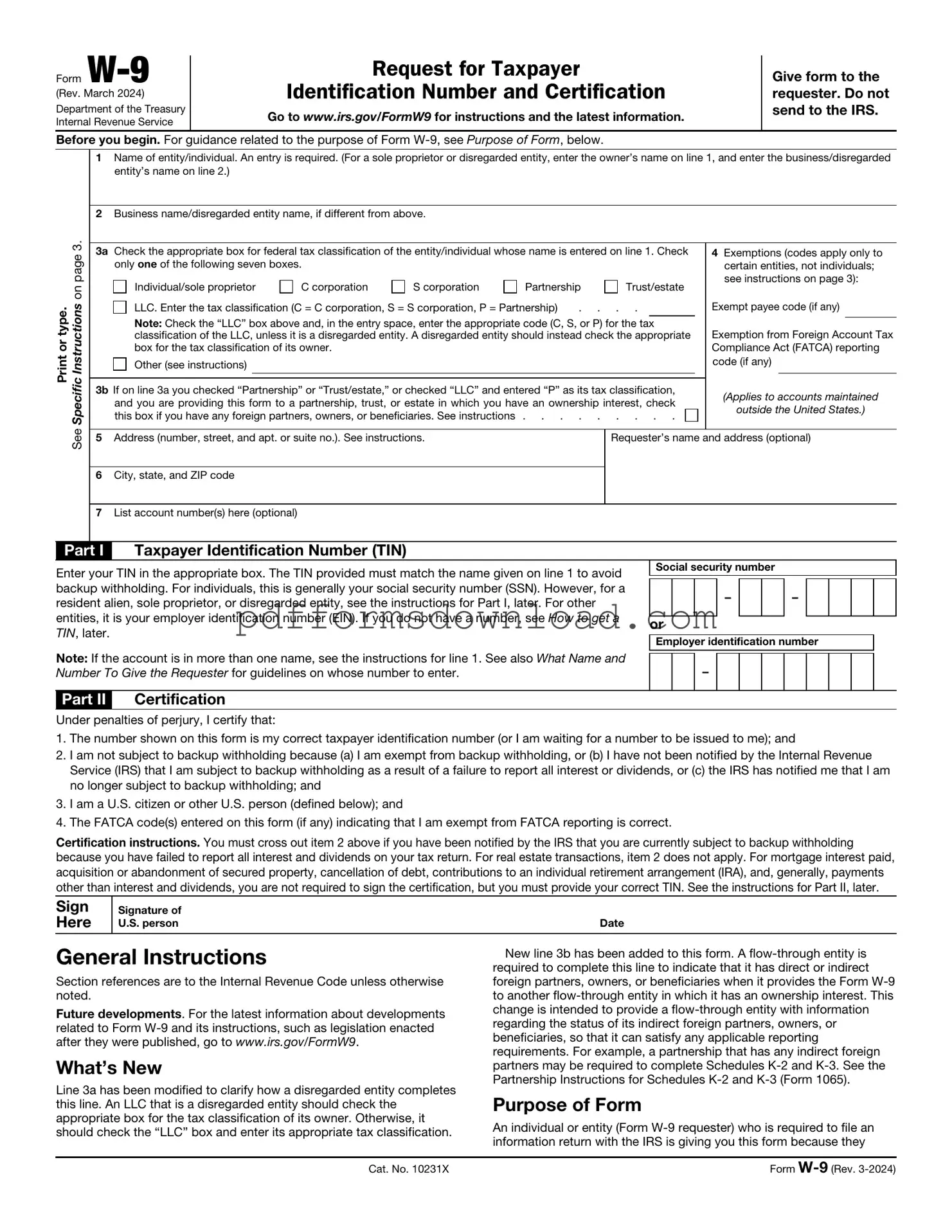What is the purpose of the IRS W-9 form?
The IRS W-9 form is used to provide your taxpayer identification information to someone who is required to report certain types of income paid to you. This form is typically requested by businesses or individuals who need your information for tax reporting purposes. By completing the W-9, you help ensure that the correct information is reported to the IRS, which can prevent issues with your taxes later on.
Who needs to fill out a W-9 form?
Anyone who is receiving income that is subject to reporting must fill out a W-9 form. This includes freelancers, independent contractors, and vendors. If you are a business or individual receiving payments for services rendered, you will likely be asked to complete this form. It’s important to provide accurate information to avoid any complications with your tax filings.
What information do I need to provide on the W-9 form?
You will need to provide your name, business name (if applicable), address, and taxpayer identification number (TIN). Your TIN can be your Social Security number (SSN) or Employer Identification Number (EIN). Additionally, you will need to indicate your tax classification, such as individual, corporation, or partnership. Ensure all information is accurate to avoid delays in processing.
How do I submit the W-9 form?
The W-9 form is not submitted directly to the IRS. Instead, you provide it to the person or business that requested it. They will keep it on file and use the information to report any payments made to you on their tax returns. You can submit the form by email, fax, or mail, depending on the preferences of the requester.
Is the W-9 form required every year?
The W-9 form does not need to be filled out every year. Once you submit a W-9 to a requester, they will generally keep it on file. However, if your information changes—like a change in your name or taxpayer identification number—you should submit a new W-9. Additionally, if the requester asks for an updated form, it’s best to comply to ensure they have the most current information.
